Welcome to our comprehensive guide on organic liquid potassium fertilizer, an essential resource for gardeners and farmers aiming to enhance plant health naturally. In this article, we will explore the significance of potassium in plant growth, delve into the benefits of using organic liquid fertilizers over their synthetic counterparts, and provide practical tips on application methods. Whether you’re a seasoned horticulturist or a novice gardener, this guide will equip you with the knowledge to boost your plant’s vitality and productivity sustainably. Let’s embark on this journey to unlock the secrets of maximizing plant health through organic means.
What Is Organic Liquid Potassium Fertilizer?
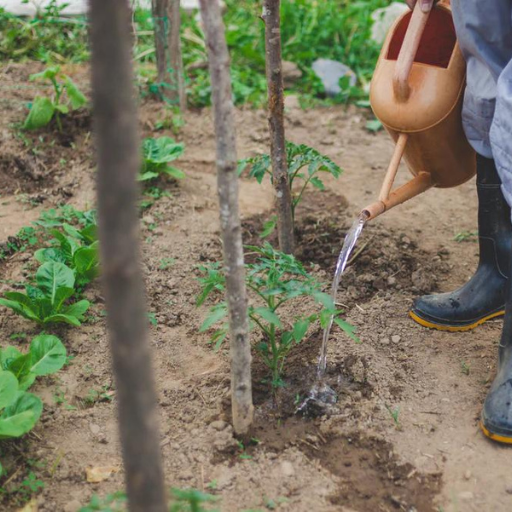
Understanding Liquid Potassium
Liquid potassium is a solution organic in nature, which has a lot of nutrients and provides the much-needed potassium to plants in an easily-available form. Potassium is involved in several plant functions, among them water regulation, enzyme activation and photosynthesis. Unlike granular or solid fertilizers, liquid potash can be absorbed by either leaf or root of a plant hence resulting into efficient uptake of nutrients. Often times, this type of fertilizer is made from natural sources like compost tea, kelp and wood ash hence making it eco-friendly alternative for improving soil fertility and plant growth.
How Potassium Plays a Role in Plant Growth
Potassium plays a vital role in the growth and development of plants due to its multifunctional roles. Here are the major ways through which potassium contributes to healthier plants:
Water Regulation: The opening and closing of stomata on leaves that control exchange of water vapor, carbon dioxide and oxygen involves potassium. Proper functioning of stomata helps in controlling water use by plants thus minimizing chances of drought stress.
Enzyme Activation: More than sixty enzymatic processes related to plant growth are activated by potash. These enzymes facilitate protein synthesis, photosynthesis formation of starches among other activities such as these metabolic pathways stimulate more robustness all round.
Photosynthesis: The rate at which carbon dioxide enters leaves during photosynthesis as well as movement of assimilates (photosynthetic products) are regulated directly by potash. Sufficient quantities improve rates thereby promoting good yields through increased growth.
Nutrient Transport: Mobile nutrient like potassium plays important role in nutrient and carbohydrate translocation within the plant body; this ensures that all parts receive necessary nourishment needed for continued growth.
Stress Resistance: The strengthening property of potassium keeps plants safe from abiotic factors such as frost, salinity or droughts since they have more resistance against stresses like these while enhancing disease resistance against pathogens.
Technical Parameters:
- Optimal Leaf Potassium Concentration: Commonly, leaf tissue concentrations of 1.5% -2.5% K in dry matter are considered as sufficient for most crops.
- Soil Potassium Levels: To promote optimal plant growth, desirable soil potassium (K) levels range between 120-250 ppm (parts per million).
- Fertilizer Application Rate: The rate of application of potash fertilizer varies from 100 to 300 pounds per acre depending on the crop and soil test results.
By using organic liquid potassium fertilizers, it is possible to ensure that enough potassium is available in a way that promotes sustainable full growth potential of plants.
Benefits of Using Organic Fertilizer
Using organic fertilizers has several advantages when it comes to plants as well as environment. First, they improve the structure and fertility of soils through addition of organic matter which enhances their aeration and water retention abilities; thus these have healthier root systems and strong plants. Secondly, they act as slow-release sources of necessary elements hence ensuring continuous provision over time with no danger associated with leaching out important nutrients from the soil which enhances sustainability while lessening impact on environment. Lastly, organic fertilizers provide support for beneficial soil microorganisms hence maintenance of balanced ecosystems where natural pest and disease control takes place in such type of soils like this one. In conclusion therefore it can be noted that organic manure is vital for long-term soil fertility and sustainable agriculture practices because they maintain good health for many years in cases where artificial soil enhancement methods have proven unproductive.
How to Use Organic Liquid Potassium Fertilizer?
Application Methods for Different Plants
- Vegetables: For these vegetables, tomatoes, peppers and leafy greens among others, organic liquid potassium fertilizer should be applied directly to the soil around the base of the plant. To ensure even distribution, use a watering can or a hose-end sprayer. This should be done every 2-4 weeks during the growing season period for better fruit formation and health foliage.
- Fruit Trees: To apply organic liquid potassium fertilizer on fruit trees dilute it as directed by the manufacturer. Use a sprayer or a bucket to apply solution around the root zone of the tree. It is advisable to do this once in early spring and again in late summer for good production of fruits.
- Flowers and Ornamentals: The organic liquid potassium fertilizer should be applied directly onto the soil at their bases of flowering plants and ornamental shrubs. Make sure you have used a watering can or spray bottle when applying it. These products should be supplied every 4-6 weeks throughout growth cycle for more blossoms vibrancy and stronger plant framework making.
- Lawns: Organic liquid Potassium fertilizers are available in hose end sprayers that can be evenly sprayed across lawns as needed. In early spring and late summer period, which are suitable for enhancing healthy underground growth while enabling plants to survive droughts.
By following these application methods tailored to different plants, you can effectively use organic liquid potassium fertilizer to enhance plant health and yield.
Ideal Frequency and Quantity per Gallon
The frequency and amount of ideal amounts of organic liquid potassium per gallon heavily depend on what type of crops being fertilized are grown. Generally recommended amounts include 1-2 tablespoons per gallon of water every two to four weeks for vegetables grown between springtime till harvest time respectively. Similar concentrations are useful with most fruit trees though they need higher concentration such as 1 tablespoon per gallon twice annually especially in early spring, before they start blossoming in late summer towards autumn. Between 1 and 2 tablespoons are needed for flowers and ornamentals respectively, which should be done after every four to six weeks. Use a spray solution of 1-2 tablespoons per gallon of water, applied in early spring and late summer to maintain healthy growth and resilience. These frequencies and quantities ensure that each plant type receives the appropriate amount of nutrients for optimal health and productivity.
Common Mistakes to Avoid
- Over-Fertilizing: Over-fertilizing is one of the most common mistakes made when applying fertilizers. Excessive amounts can burn plants leaving behind imbalances in soil nutrient contents. Stick to recommended quantity as on the label of the fertilizer.
- Incorrect Application Timing: It is crucial that organic liquid potassium fertilizer is used at the right time. In extreme weather conditions like during very hot days or when there are heavy rains, it effectiveness reduces a lot. Always observe the recommended times to apply so as to achieve maximum nutrient uptake.
- Inconsistent Application: Lack of uniformity while using fertilizers may hinder crops’ growth. Consistent supply through well-timed applications ensures constant nutrient levels in soils guaranteeing an even crop development rate.
- Ignoring Soil Tests: Applying fertilizers without first testing soil can lead to inefficient use of nutritive elements by plants. The information derived from soil tests helps in determining what amounts of specific nutrients have to be applied through fertilization processes into your farm land.
- A one-size-fits-all approach is not always suitable: Individual plants have different nutritional requirements. Using the same fertilizer strength for all plant species can lead to under or over fertilization. Adjust quantity and frequency of fertilizer application according to each plant type’s specific needs.
What Are the Benefits of High Potassium Fertilizer?
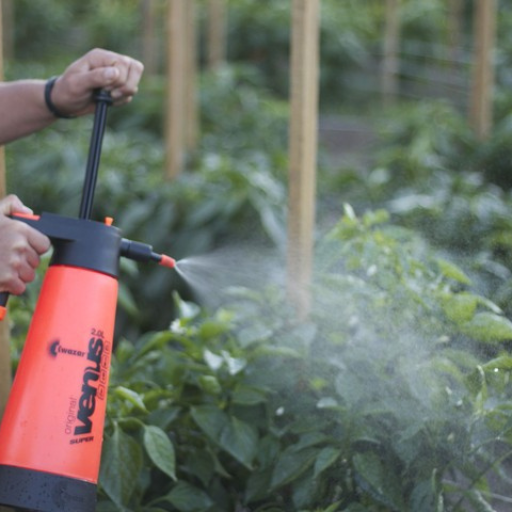
Increasing Soil Nutrient Levels
High potassium fertilizers are crucial in increasing soil nutrient levels through improving plant’s efficiency to absorb the essential nutrients. Physiological processes such as photosynthesis, water uptake, and enzyme activation are regulated by potassium. It promotes overall plant health and growth by aiding in movement of water and nutrients within the plant. Additionally, it assists in the strengthening of plant tissues which enhances diseases resistance and tolerance to adverse growing conditions. Therefore, healthier plants that yield more with a higher quality can be realized when high potassium fertilizer is applied.
Raising Yield and Encouraging Strong Roots
Increasing crop yields significantly relies on high potassium fertilizers since it improves various growth activities within the plant. Within plants’ bodies, proteins and starches whose synthesis require potassium play roles essential for their development. Also, root growth improvement as well as higher nutrient absorption capacity results into strong root systems formation. This way, robust or sturdy plants that can withstand harsh climatic conditions are achieved since roots get adequate water and nutrients from soil. Such improved nutrient intake means that there will be enough raw materials needed for making bigger crops. Moreover, because it reduces stress on the plant itself by strengthening tissues of these plants against diseases and pathogens all together leading to healthier crops characterized by good quality fruits and vegetables.
Effect on Flowering Plants and Vegetables
Flower/vegetable growth is widely impacted upon by high potassium fertilizer use. Strong blooms in flowering plants develop due to availability of potassium in them which is essential during their blooming periods for healthy strong flowers development purposes alone Let alone vegetable produce which would not develop firmness without enough amount of this element Potassium is responsible for sugary tastes in vegetables due to sugars and starches formations in them which determines their flavor In addition, gardens with sufficient potassium levels may experience reduced cases of ill-health among the plants when exposed to unfavorable conditions hence forming more adaptive productive garden crops that provide resistant varieties against many harmful organisms. Thus, the use of high potassium fertilizer would be promoting increased production and better quality in both flowers and vegetables.
How Does Organic Liquid Potassium Fertilizer Compare to Other Types?
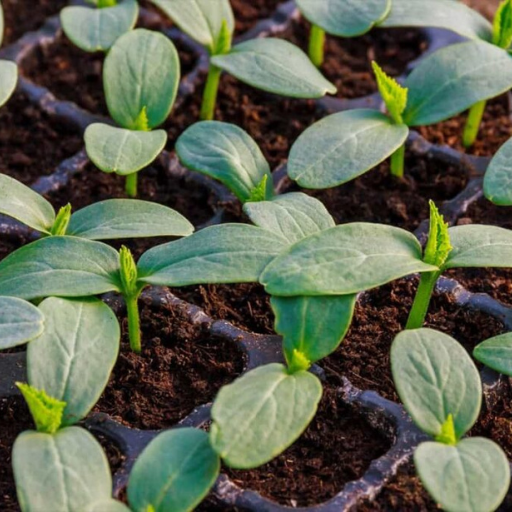
Liquid vs. Granular Potassium Fertilizers
Comparison between liquid and granular potassium fertilizers reveals several significant distinctions. Quick absorption and immediate nutrient availability to plants are assured by the application of liquid potassium fertilizers through foliar spraying or irrigation systems. This rapid intake can be very useful when there is a need for fast fix of potassium deficiency or during critical growth stages. On the other hand, the rate at which they release nutrients makes them slower compared to granule forms which provide continuous supply for a long period. They are typically applied directly on the ground prior planting or for ongoing maintenance as they decompose slowly and nourish the plants.
Additionally, in bigger agricultural settings such as large-scale farming, liquid fertilizers are less complicated to use at precise amounts and they can also be distributed uniformly. But may require more frequent applications than their granule counterparts. Granular fertilizer has lower cost per unit making it economical whereas it requires fewer applications hence labor saving measure too. Each type has its own set of advantages; therefore, deciding whether to go with liquid or granular K fertilizers depends on specific plant needs, soil conditions, and grower’s choice.
The Role of Potassium Sulfate in High Potassium Fertilizer
High nutrient contents combined with low salt index make Potassium Sulfate (also known as Sulfate of potash or SOP) an important component in high potassium fertilizers. Water uptake, enzyme activation and photosynthesis are among various plant processes that macronutrient – potassium facilitate. This allows plants to take up this element faster since SOP provides highly soluble source for uptake of K by plants. It does not add chloride into soil unlike Potassium chloride (muriate of potash), thus making it preferable for crops that have sensitivity towards chloride ions even those involving low salinity fertilizer requirements.
Moreover sulfur is supplied by SOP apart from potassium as another vital nutrient necessary for protein synthesis and activities enzymes perform in organisms’ bodies . Combination of these two elements in SOP assists improve quality as well as yields considering crops like fruits, vegetables and tobacco. Additionally, potassium sulfate can be used together with most other fertilizers making it fit in any fertilization program. This property of potassium sulfate combined with its effectiveness makes a major component of high potassium fertilizers necessary for robust plant growth and maximum crop yield.
Comparing Organic and Synthetic Options
When evaluating organic and artificial potassium fertilizers, there are several aspects which should be considered like nutrient availability, environmental implications, buying price among others. Natural sources provide for the derivation of organic sources such as Kelp meal, wood ash or compost that is known to be eco-friendly as well as improve soil health through enhancing its structure and increasing microbial activity levels. However, their nutrient release rate is typically slow thus they may call for higher application rates to meet the high requirement of K.
In contrast, synthetic forms like Potassium Sulfate and Potassium Chloride (Muriate of potash) are created through chemical processes. Unlike their organic counterparts these fertilizers offer instant supply of nutrients in precise amounts thus available for immediate uptake by plants. These might also be cheaper than organic options mainly when applied in large scale farming areas where they could be easily utilized on ground without any complications. Nevertheless there are concerns about their environmental footprints due to soil degradation and water pollution associated with their production and use over time.
The strengths of each choice differ: organic fertilizers are important in supporting long-term soil health and sustainability, while synthetic fertilizers ensure nutrient use efficiency and precision. In many cases, the most suitable preference is determined by specific crop requirements, soil conditions, and grower desires. An effective strategy for optimal plant growth and maintenance of soil fertility involves a balance between organic and synthetic sources.
What Do Customer Reviews Say About Organic Liquid Potassium Fertilizer?
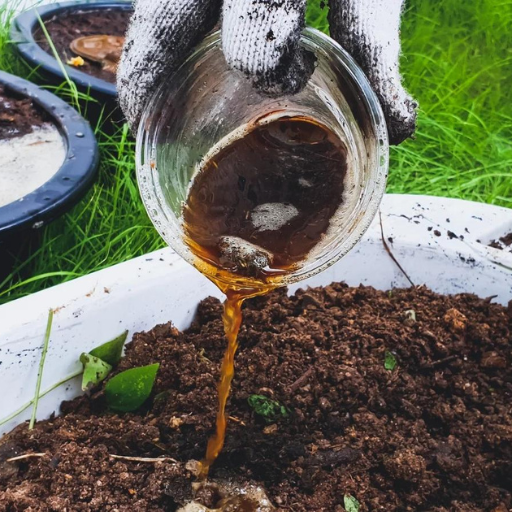
Common Benefits typically reported
According to client feedbacks, one of the often mentioned benefits of organic liquid potassium fertilizer is its capability to enhance the general wellbeing of the plant. After continuous use, many people have seen their plants become more buoyant and resilient . In addition, most customers indicate that they observe an improvement in fruit and flower production as well as bigger and more plentiful yields. Furthermore, a lot of buyers are glad that organic liquid potassium fertilizers are environmentally friendly because it shows that they are making the right choices for their gardens and environment.
Challenges and Problems Faced by Customers
Some common issues arise when users address challenges regarding organic liquid potassium fertilizer. The first issue is an inconsistency of nutrient content which leads uneven growth rate in all plants. Also, some individuals have mentioned that using natural liquid potassium fertilizer can be quite costly compared to synthetic ones especially if you have a large garden or agricultural operations. Moreover some organic manures smell too much for anyone’s liking hence repelling away them in application. However, in spite these drawbacks, many users think that outweigh the disadvantages due to its long term benefits and environmental advantages.
What Customers Recommend for Best Results
From what I found out about best results with organic liquid potassium fertilizers indicates several key recommendations must be followed. First shake bottle well before using it so as to ensure even distribution of nutrients on the farm land. For me reducing the amount of fertilizer by mixing it with water according to manufacture’s recipe then applying it during early morning or late afternoon can help prevent nutrient burn thus maximizing uptake by plants. A constant application every 2-4 weeks depending on plant requirements at various stages has improved my plant health and yield significantly. On top of this including compost or fish emulsion into your liquid potassium fertilizer mixture will create a nutritious balance for your plants however lastly make sure you keep it cool dark place where It would not lose effectiveness till end time. Since doing this, I have noticed significant improvement in the vitality and productivity of my garden.
Frequently Asked Questions (FAQs)
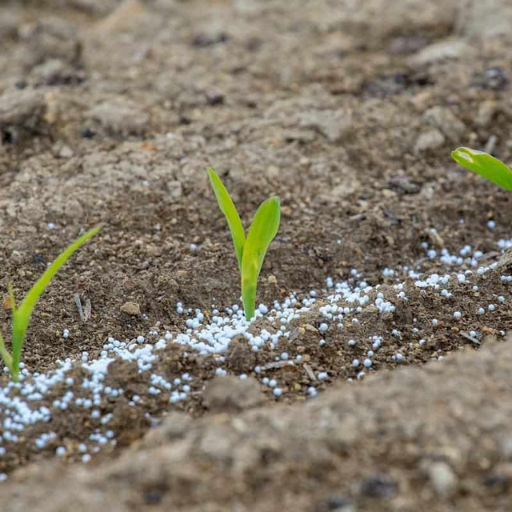
Q: Then what is organic liquid potassium fertilizer and why is it an important aspect of plant health?
A: Organic liquid potassium fertilizer is a plant food that has the essential soluble form of potassium. It helps to enhance root development, fruit and vegetable quality as well as encouraging vigorous growth. The role of potassium in multiple plant metabolic processes makes its inclusion in overall plant nutrition vital.
Q: Is there any difference between liquid potassium fertilizer and others forms of potassium fertilizers?
A: Liquid potassium fertilizers like those used for hydroponic systems or traditional soil planting are absorbed quickly which means they take effect immediately unlike solid potash or langbeinite forms. This water-soluble nature also makes the fertilizer usable through fertigation.
Q: Can I use organic liquid potassium fertilizer on all types of plants including tomato plants and vegetable plants?
A: Yes, it can be applied on various crops such as tomato plants and vegetable gardens; organic liquid potassium fertilizer supports vigorous growth and enhances crop quality.
Q: How do you apply liquid organic potassium fertilizer to lawns and gardens?
A: A hose-end sprayer or sprinkler system can be used to apply the liquid organic potassium fertilizer. For turf (lawns), dilute the product according to manufacturer’s instructions typically requiring mix ratios such as 2½ gallons per 1000 square feet. Always make sure to perform a jar test to ensure compatibility with other fertilizers or pesticides.
Q: What does NPK ratio mean in terms of Potassium Fertilizer like 0-0-50?
A:The proportionate composition of nitrogen (N), phosphorus (P) and Potassium (K) in a given manure is represented by the NPK ratio. In this case, 0-0-50 contains no nitrogen or phosphorus but contains 50%potassium making it a high grade potash ideal for boosting specifically its levels alone among other plant nutrients.
Q: How frequently should I apply organic liquid potassium fertilizer?
A: The frequency of application depends on crop needs and growth stages. For most crops, every 4-6 weeks during the growing season is recommended. Always follow the manufacturer’s recommendations and adjust according to plant performance.






